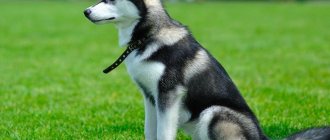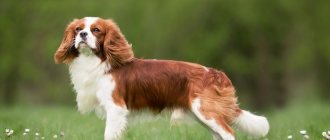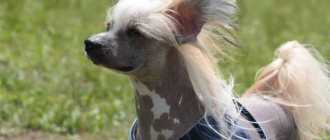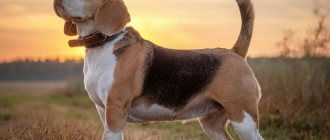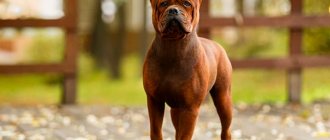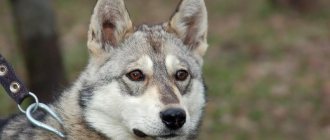Dogs are animals that have accompanied humans since ancient times. That is why there are a large number of breeds. But today we will focus on two of them - huskies and huskies. The fact is that many people believe that they are the same breed. In fact, this is a myth that we will try to dispel. Although these breeds have common characteristics, the differences between huskies and huskies are significant. This applies not only to the external signs of animals, but also to the character, habits, and use of dogs by humans. To understand the differences between the two breeds, you need to know the description of each of them, as well as the characteristics.
Brief history of the breed
The silhouette of this breed was depicted on a fresco in one of the temples of Kievan Rus; scientists document that the wall painting was made in the 11th century. Then no one remembered about Laika dogs until the beginning of the 19th century, when noble nobles of Europe fell in love with hunting large animals.
The first successful experiments in breeding purebred huskies began at the end of the 19th century. The breeding and description of this breed was carried out by Prince Alexander Shirinsky-Shikhmatov and the famous dog handler Maria Dmitrieva-Sulima.
In the early 20s of the last century, more precise descriptions of this breed appeared, and nurseries that were created in the northern regions of Siberia expanded. The name “Laika” refers to several breeds that are quite similar in appearance, the most common of which are:
- Russian-European;
- East Siberian;
- West Siberian Laika.
This is interesting! All breeds of huskies and similar dogs from the northern regions outside of Russia are called Spitz in the description.
Experienced hunters say about the Laika dog that it is inaudible when chasing game, and it begins to bark loudly only when it has driven, for example, a squirrel into a lonely tree in a clearing, from where it can no longer escape, or when a tired bear has sat down to rest. It was for the ringing voice that the dog was given such a name: the hunter always hears exactly where in the forest the husky stopped the animal.
During the Second World War, dogs of this breed were used to search for mines, as messengers and unique deliverers of special cargo across the front line or to surrounded units: without much effort, a husky could deliver a couple of boxes of ammunition or explosives unnoticed by the enemy. It was they who saved the lives of many seriously wounded soldiers when they were delivered on carts specially made from skis to medical battalions, running through places that were not shot at by the Nazis.
Today, the hardiest breed, judging by the description, is the West Siberian Laika, because they have no competitors in hunting fur-bearing and large animals (for example, wild boar, elk and bear). They are the descendants of ancient wolves and have preserved at the genetic level all the best that these intelligent predators have by nature.
Price
Before buying a dog, a potential owner must understand why he needs a husky in the first place. If you need a working or guard dog, you can purchase a puppy without documentation, but it must have working parents. Here, representatives of the breed may have some flaws in appearance, but they will have the required skills. Pets with documents will be needed for breeding and exhibitions.
- Russian-European huskies from working parents in the absence of a pedigree will cost in the range of 2,000 – 10,000 rubles. When preparing documents, the price increases to 10,000 - 40,000 rubles.
- East Siberian puppies 4000 - 5000 in the absence of documents, in them 10000 - 20000.
- The remaining varieties cost 3,000 – 5,000 rubles without pedigrees; its registration increases the cost at least twice.
Interesting Facts
It is unlikely that any exceptional facts specifically for this breed will be found on the Internet, but there are interesting points:
- In Ancient Rus', according to the laws of the 14th century, large dogs were the most valuable domestic animals, because they could be exchanged for 3 horses, a herd of sheep or one working ox.
- At the beginning of the 18th century in feudal Japan, killing a dog was punishable by death, and people were required to bow when meeting stray animals and show them signs of respect.
- The number of teeth in an adult dog is 1.5 times greater than in puppies.
- Dogs' sense of smell is hundreds of thousands of times stronger than that of humans, but their vision is not as clear as humans.
- All dogs hear ultrasound. Considering this scientifically proven fact, Paul McCartney inserted several analog sounds at the end of the musical composition “One Day in the Life” especially for his beloved pet.
- Laika, by description and nature, is a predator, so the diet must be appropriate. In the North of Siberia and Chukotka, local residents specially stock up on food for sled dogs, most of which consist of huskies, troublemakers and huskies - yukola from weed fish. These stocks are light in weight and can be stored for several months even in the hot summer.
- The husky may smell like corn chips, but this does not mean that the dog stole a treat somewhere - the cause may be microbes that have accumulated between the toes. You need to examine your pet more often and monitor its hygiene.
All huskies are distinguished by their special friendliness and kindness, and at a young age they are especially playful. But you need to know the dog’s habits thoroughly - if it waves its tail to the left, then this is an alarming signal, the dog is excited and very aggressive.
Flaws
| Laika | Husky |
|
|
Dear Laika and Husky owners, tell us about your dogs? Do people on the street often confuse the name of a breed? We will be interested in learning about the upbringing, training, nutrition, and care features that you apply to your pet. We will be glad if you add information about the differences between these two breeds.
Standards and appearance
Regardless of the variety and generally accepted standards that any husky must meet, the characteristics of the breed look like this:
This is interesting! The unique breed has managed to maintain similarities with its ancestors - wolves. And their physique has practically not changed, with the exception of the tail curled into a ring.
The description indicates the height at the withers of huskies: males are 54-65 cm, females are a couple of centimeters lower, with the exception of the Karelian-Finnish breed - males up to 48 cm, females 40-46 cm. An adult husky can weigh between 20-25 kg.
Varieties of huskies
There are several types of huskies. Our guide will help you determine the breed of husky:
If we analyze the description of all breeds, then the largest husky is the East Siberian, and the smallest are representatives of the Norwegian branch.
There is no official description and registration of the Mini-Laika breed with the International Canine Organization. There are litters of miniature puppies that are developmentally lagging behind their counterparts, but then they grow into normal dogs with appropriate proportions.
When purchasing puppies, it is not difficult to determine the breed of huskies, since all the data corresponds to the documents provided by the breeder. If the purchase is made on a specialized market and without a pedigree, then everything depends on your knowledge of the characteristics of the chosen breed.
Color and coat type
East Siberian and West Siberian huskies can boast the greatest variety of coat colors, because different representatives of aboriginal dogs were involved in the breeding of the breed. These breeds are classified as smooth-haired huskies, which have a hard coat, but the color can be varied and depends on the specific breed.
The Karelian-Finnish breed is distinguished by its bright red-red color, so their representatives can be called brown huskies. Although this is not entirely true, they can sometimes camouflage themselves more like a red fox.
Yakutskaya
This species appeared in Yakutia on dog rivers. Previously, rivers were divided into 2 types: where there was a lot of fish, dogs could be fed with it; dogs could be fed with it while moving; where there was no fish, deer were used and the rivers were called deer rivers. The Yakut Laika was bred to be hardy and withstand long journeys.
- Average height : for a male - 59 cm, for a female - 53 cm.
- The muzzle is elongated, the skull is strong.
- The eyes can be blue, brown or black, and are also almond-shaped.
- The back, chest and limbs are very muscular and strong.
- The coat is thick, with good undercoat.
- Only spotted colors in different combinations: white with black, red.
The character is calm and friendly, but conflicts may arise with other people's dogs.
Treats people well, can get along with children. Did you know? There can be 2 leaders in a team, then the dogs themselves distribute responsibilities among themselves and adhere to them.
The dog is in very good health, but a veterinary examination and vaccinations are necessary. This species is not suitable for keeping at home; it must be kept in a spacious enclosure. Care consists of brushing the coat once a week and active training.
Character and behavior
Laikas are smart and quite intelligent dogs, but not every owner can teach them certain skills on their own, because these animals are characterized by independence and touchiness. The husky has an excitable character, which interferes with the development of hunting skills and basic commands, but basically it is docile and soft.
Laikas have a developed sense of justice, so they often express dissatisfaction and resentment at people’s wrong actions. They perfectly detect reproach in the words of the owner, they can distinguish intonations, so dog handlers advise not to shout at dogs, so as not to develop aggressiveness in them. A calm reprimand has a stronger effect on the dog than shouting.
Important! When huskies hunt, they crush small game and bring it to the owner, and stop a large animal, and then with a loud bark they show the hunter the place where the hunted elk, wild boar or bear is located.
Dogs show particular aggressiveness when their owner is in danger - they will protect him even at the cost of their own life. Laikas are indifferent to strangers, because they are not objects of hunting.
Common features
The main external similarity of these dogs is their erect ears, as well as a wedge-shaped head and a slightly pointed muzzle.
The coat of a husky and a husky also has a similar structure - it is very dense and dense, consisting of a soft undercoat and a coarser and tougher awn.
Both huskies and huskies look like strong and hardy animals, and they also both have some external resemblance to wolves.
How to choose the right husky puppy?
Purebred huskies are much more expensive. If a husky puppy is chosen for hunting, then you need to know a few nuances:
- take him by the scruff of the neck, if he squeaks, then feel free to take another, and if he is silent and tries to free himself, then this is the right choice;
- look into the puppy's eyes - a born hunter will never look away;
- watch the puppies while feeding, the most stubborn one will push everyone away until he gets to the rear nipples, where there is the most milk;
- the little hunter is constantly sniffing out something and is the first to find food;
- before choosing a puppy, you need to look into its mouth and check the bite is correct - the upper jaw should overlap the lower jaw;
- the puppy should vocalize and not whine;
- check the color, it must be described by the official standard;
- dewclaws must be docked.
The thickness of the paws and the volume of the skull, the color of the skin on the belly - pink without signs of an umbilical hernia, the ears and eyes are clean - will help determine what size the dog will be. The muzzle of a healthy puppy is black from nose to eyes, wide nostrils, deep-set eyes, erect and mobile ears.
Experienced dog handlers say that future abilities can be determined in a husky by the color of its claws:
- motley means that the dog will be able to work on hares and large animals;
- If the puppy’s claws are solid black or white, then he can only handle small fur-bearing animals and birds.
The shape of the tail also says a lot about future abilities: a husky with excellent hunter abilities has a ring tail that does not touch the back.
Owner reviews
Most owners praise their pets very much, but do not forget to mention that the dogs are very energetic and therefore need long walks. Some people talk about the willful nature of huskies, which is not so easy to deal with. Still others say that a number of problems are caused by caring for a pet during shedding.
As a conclusion, I would like to remind potential owners that huskies are dogs that need to be constantly exercised. These are working dogs, not fluffy pet toys; if you do not load your pet with the loads it needs, then it will find entertainment for itself, which the owner may not like at all.
Caring for puppies
At an early age, husky puppies cannot do anything, only eat, sleep soundly, and play briefly with their brothers. During this period, you need to properly care for your husky puppy: organize meals up to 4-5 times a day, do timely vaccinations and teach the basics of education and training.
Puppies are fed strictly according to the clock, after which the bowls are washed. Water should always be near the feeding site, but in a separate container and changed at least 2 times a day. It is recommended to start complementary feeding early:
- Laika puppies from 1 month begin to receive bait in the form of milk porridge, vegetables and minced meat;
- at the age of 1.5 months, you can already give well-cooked soft bones and cartilage so that the puppy learns to chew them;
- A 2-month-old husky puppy receives finely chopped boiled meat and boneless sea fish instead of minced meat.
With normal growth and development, a husky puppy's ears stand up already at the age of one month, but not later than 2 months of age. Puppies should walk outside at an early age, and from 3 months they are taken for a walk in the forest.
Laika grows until the age of 2 or 3 years - the main growth is formed before the first year of life, then enlargement of bones occurs, which people practically do not notice.
Advantages
| Laika | Husky |
|
|
Care and maintenance
This breed was not bred to be kept indoors, so the dogs do not tolerate heat, and their fur is brushed only during shedding. If you bathe your husky more than twice a year, its coat will lose its shine due to the lack of natural oil. Keeping a dog is not burdensome for the owner:
- the husky is brushed 2-3 times a week, the rest of the time the animal takes care of itself, as it is very clean;
- in the summer, hunting breeds are sheared so that the wool does not create a greenhouse effect;
- the eyes of this breed never turn sour, but they should be examined weekly and always after a hunt;
- ears and teeth should be examined within a week; if the ears are dirty, they should be cleaned with a cotton swab; to prevent dental diseases, special sticks that imitate bone are used;
- During an active life and frequent hunting trips, the claws are worn out during movement;
- In the summer, it is imperative to treat your pet for fleas and ticks.
Do not forget about the prevention of internal parasites, which is carried out at least once every 2 months.
The right diet
You need to make sure that the dog is always full, but does not overeat. Laikas are quite unpretentious in food, but their diet should include meat, preferably boiled, to avoid worms, be sure to add vegetables, they especially like carrots. Dairy products, nuts and dried fruits are needed to replenish calcium in the animal's body.
Dry food is given as a reward during training, but dog handlers do not recommend getting carried away with it. The best analogue is Akana food, which is produced for super premium dogs, because it contains a lot of protein, but few carbohydrates.
How long your pet will live depends on the correct maintenance and feeding conditions. You need to feed an adult dog strictly at the same time. At the same time, you need to make sure that she completely eats the given portion: if there is food left, you need to reduce the volume.
Walking and physical activity
Walks with a husky should be active, because these born hunters live on the move and do not tolerate long periods of immobility. You need to start with a warm-up, that is, walk at a brisk pace, then switch to easy running. An excellent option if the owner rides a bicycle - your pet will be happy to play catch-up or will confidently run alongside, keeping up even at a good speed.
Then, in a secluded clearing in a forest plantation or city park, you can stop and play; to do this, take a ball with you or use improvised means in the form of a dry stick.
Remember, a husky is a hunter; if it smells a small animal, then its inherent instincts can overcome obedience, and the dog will run away in search of game.
If a dog is kept in an enclosure in a large courtyard of a country house, then it is necessary to walk it at least 2 times a day so that it can run around to its heart’s content and get some fresh air.
Training and education
Raising a husky puppy should begin at an early age. By 3 months the dog should:
- respond to nickname;
- come running at the first call of the owner;
- wear a leash and collar in your mouth, for which you will be given a reward.
From the first days of being among people, the dog must know the place allocated for him to eat and sleep, play with his toys in the yard, and not with people’s things.
Attention! This breed loves processed cheese very much, so it can be used as a reward during education and training.
When a young husky is taken for a walk, it is necessary to praise the puppy when performing natural needs and teach it to move next to the owner when the leash is in a sagging state. At the age of no later than 5 months, the husky should be taken to general training courses (GTC) so that it knows and follows all generally accepted commands. The best option is group classes. By participating in them, the dog gets used to foreign animals and will not react to them during a walk.
The baiting of huskies begins depending on what kind of hunting the dog was purchased for. Young puppies are taken with them to accustom them to the smell of killed game and to show the work of experienced huskies when catching birds. There is no danger for the pet, and he will accept the experience and tracking techniques almost instantly - his innate instincts will help him with this. For a large animal, baiting is done when the dog is one year old, and for a bear - no earlier than 1.5-2 years. At first, you are taught not to be afraid of a large predator, but to be especially careful with it in order to protect yourself from its claws.
Hygiene
Laikas are very clean and take care of themselves. However, during periods of shedding, they need to be helped by combing out the loose hair so that less of it is in the enclosure or in the yard where the dog walks during the day. Laikas are accustomed to water at an early age, so they are not afraid to swim and treat bathing as a necessary procedure.
Who is more picky about food?
Dogs of both breeds are not too picky about food and eat natural and industrial food with appetite.
Unlike huskies, huskies are less picky about the quality of food. Dogs digest almost any food well and do not suffer from frequent diarrhea, vomiting or allergies.
Unlike huskies, huskies cannot control themselves and are prone to overeating. Therefore, dogs should not be fed additionally between meals.
We also recommend reading: What to feed a husky puppy?
Also: Is it possible to feed a dog chicken liver?
Can dogs be given eggs?
Rating of quality food: Holistic food for dogs
Vaccinations and susceptibility to disease
Like all dogs, Laika puppies receive their first vaccinations in the first year of life, but vaccinations are not carried out during the change of teeth.
AgeFrom what diseaseNote
| 8-12 weeks | Distemper, infectious hepatitis, leptospirosis, parvovirus enteritis | Primary vaccination |
| 11-15 weeks | Similar list | Revaccination (repeated vaccinations) |
| 9-12 months | Parvovirus enteritis, rabies | Last vaccination, then repeated a year later |
Laika bears puppies from 55 to 65 days, it depends on the number of puppies in the litter. If labor has not started before 70 days, then urgently take the dog to the veterinarian. Laika is a hunting breed that can become infected when bitten by a pursued weasel or marten, while in a forest pond, or attacked by a snake. Therefore, if there is a sharp increase in temperature and low mobility of the dog, you should urgently contact a veterinarian.
Lifespan
This breed is distinguished by its exceptional love of constant movement. If you keep your pet busy with running, active games and weekly hunting trips, the husky will live a full life, delighting the owner with its activity in pursuing any animal. The age limit for this breed is 12-14 years.
Can a dog change as it ages?
I often meet people who admire the blue eyes of our husky dogs, but when I start telling them that this feature is also found in other breeds, many are surprised! My dog and I often went to exhibitions, international and regional, so we often saw blue-eyed dogs.
It’s easier to focus on appearance. In this article we will try to help Laika lovers with black coat color make their choice.
The Siberian husky variety is constantly confused with the husky.
Experts will answer your question: what does Balkan Baikal and calamus mean in huskies? Answers from three site users were found. Instructions and videos are available in international format for citizens of any country over 18 years of age.
Pros and cons of the Laika breed
Before getting such a mobile breed, you need to study all its positive and negative aspects:
Advantages and disadvantages
| Quite unpretentious animals in food and maintenance | The coat sheds and requires constant care |
| Friendly to all family members, love outdoor games | Too active and mobile to be in a city apartment |
| Endowed with good health and stamina | Requires daily long walks in open areas and special training. |
| Attractive appearance | Character is persistent |
| Born hunters |
If you need a reliable hunting companion, then you can't find a better husky. She will not leave her owner in a dangerous situation and will protect him to the end. With the help of a loud-voiced partner, you will always know where the game is, and the husky will independently crush and bring small fur-bearing animals.
Training
It is believed that huskies are more obedient and easier to train and train than huskies. In any case, you need to start training your puppy as soon as you purchased it. You need to start with socialization, introduce him to all family members, house, apartment, walking areas.
It is imperative to enforce prohibitions; if violated, it is not recommended to hit the dog . But at the same time, it is necessary to praise and treat your pet when the results are positive. A husky will obey its owner if this person has proven that he is the boss in the house. For this breed, it is important to understand who the leader is in order to fulfill his requirements.
Unrecognized
Breeds not recognized by the FCI include:
- Norwegian sports mestizos;
- Eskimo husky;
- wolf-dog;
- Sakhalin Husky;
- Chinook.
Norwegian sporting crossbreeds
Norwegian mixed breed Norwegian mixed breeds are the fruit of the painstaking work of the hands of breeders who carried out matings between:
- greyhounds;
- kurtshaars;
- pointers.
The dog was created specifically to participate in sports competitions and has good physical characteristics combined with a gentle disposition.
Buying such a puppy is not easy. Due to the lack of official confirmation, it is difficult to confirm the quality of the animal being purchased.
Eskimo Husky
Eskimo Husky
North American native dog of medium size. The animal is not suitable for families with small children and needs access to constant work.
The Laika is quiet, friendly, hardworking and has hunting skills. The fearless animal was used to hunt polar bears.
The pet is not suitable for keeping in warm climates and is susceptible to sunstroke.
Due to their rarity (there are no more than 5 hundred officially registered animals), the cost of puppies reaches 420 thousand rubles.
Wolfdog
Wolfdog
Wolfdogs are unique hybrids obtained by crossing wild wolves and German shepherds. The attractive appearance inherited from the wolf and the character inherited from the shepherd allowed the animal to be used in dog sledding and service work.
It will not be possible to purchase such a pet, since sales are prohibited. The breeding project and the results obtained belong to Russian scientists.
Sakhalin Husky
Sakhalin Husky
The result of crossing Akita Inu and Spitz from Japan. Animals are fearless, prone to dominance and strongly attached to their owners.
With prolonged loneliness, Sakhalin residents develop severe psychological problems leading to physical illnesses.
Prices for puppies start from 20 thousand and reach 50 thousand rubles.
Sakhalin Huskies are not suitable for apartment living and will throw a real concert after the owner leaves for work. At the same time, they perceive the harsh conditions of the Far North with ease, enjoying participation in human expeditions.
Chinook
Chinook
Due to the rarity of the breed, you will have to pay about 600 thousand rubles for a puppy.
The rarest breed bred by Americans. Despite its unprepossessing appearance (the dog can easily be confused with an ordinary mongrel), the animal develops impressive speed and competes with the popular husky.
With each passing decade, the number of officially registered representatives continues to decline.
In conclusion, I note that sled dogs are animals that require special conditions of maintenance. The good-natured disposition, devotion and lack of aggression that unite these pets will make them loyal and devoted friends, but the specificity of their working qualities determines the maintenance of constant activity.
Nordic dogs are not suitable for inactive people who spend time at work and live in a small apartment in the center of a metropolis.
Pomsky appearance
The exterior of a Pomsky is a variable value, highly dependent on the play of genes. For example, the first generation of puppies (F1) receives an equal number of external characteristics from their parents, which allows them to look half Husky and half Spitz. Usually, to produce offspring, they take a Pomeranian male and a Husky female, since a miniature Spitz “girl” will not be able to bear and produce relatively large mixed breeds. In most cases, insemination is carried out artificially, since sires that match each other in size are a rare phenomenon.
F1 Pomskies can interbreed with each other, but the end results of such “unions” will be slightly less impressive. In general, each subsequent mating (starting from F2) does not have the best effect on the appearance of the offspring. Not only will the mestizos of later generations differ in all respects from their older brothers and sisters, but this is also a direct path to degeneration. Perhaps this is why there are so few advertisements for the sale of F3 animals in Russian nurseries.
Pomsky face
The average Pomsky of the first generation is a 5-7 kg merry fellow with a height of about 30-40 cm. Sometimes the dog’s weight does not fit into the given limits, significantly exceeding them, so 10-12 kg mestizos are not such a rarity. Sexual dimorphism in Pomskies also occurs. So, almost all the “girls” are a kilogram or two lighter than the “guys” and 5-10 cm shorter than them.
Fox type Pomsky
To streamline the external characteristics of dogs and make it easier for potential buyers to choose a pet, dog experts have identified and described five main exterior types of Pomsky.
- Fox type - combines the stretched body format of a husky and the graceful bones of a spitz. The pointed shape of the muzzle, red-red color and smooth semi-long hair give the dog a resemblance to a fox.
- The plush husky is a corpulent fluffy dog with a soft, airy “fur coat” and a short Spitz muzzle. It has a thick, donut-curled tail and inherits the coat colors of a husky.
- The white Pomsky is the rarest and largest type. Characterized by a solid white color and an elegant muzzle.
- The Brown Blueeye is the most photogenic Pomsky variety and is rarely seen. All representatives of this “clan” are distinguished by the rich brown color of their coat and nose with a blue tint to the iris. In addition, they are bony, dense dogs with semi-long double hair and elongated muzzles.
- The short-haired type is a clear outsider in the star Pomsky family. The owner of a hard and ultra-short coat, which is why it is not in consumer demand.
Coat colors
The most common shade of Pomsky coat is the husky color with a characteristic mask on the face (sometimes it may be absent). It usually comes in black and white, silver grey, fawn, brown, copper and white. Tan and solid colors are also not uncommon, unlike merle varieties.
Eyes
Everything that would be considered a defect in other breeds is the norm for the Pomsky. In particular, many mestizos are characterized by heterochromia (differing eyes). Often you can see “splashes” of a contrasting shade on the iris of dogs. As for colors, Pomsky eyes most often have brown, tan, blue and walnut green shades.




